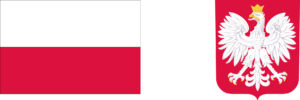Bridging the digital divide in rural areas of Central and Eastern Europe (CEE) is a multifaceted challenge that intertwines economic, social, and technological aspects. The historical backdrop of these nations, marked by substantial political and economic shifts following the collapse of the Soviet Union, has significantly influenced their digital infrastructure development. Initially, urban centres, being the economic and administrative hubs, received the lion’s share of digital advancements, leading to a pronounced digital divide with rural areas.
In rural CEE, internet access is hindered by a lack of infrastructure, economic constraints, and a gap in technological literacy. The sparsely populated rural regions often find it not economically viable for service providers to extend high-speed internet infrastructure like fibre-optic cables. Furthermore, the generally lower income levels in these areas mean that even when available, internet services might not be affordable for all residents. Adding to this, many rural inhabitants, particularly the older generation, lack the necessary skills to effectively utilise digital technologies.
To address these issues, a variety of initiatives and strategies have been employed. Governments in the CEE region have started acknowledging the critical role of internet access in development and have initiated policies to expand digital infrastructure. For example, Poland’s „Digital Poland” project aims to provide high-speed internet access across the country, focusing on areas with no or limited access. Similarly, the Romanian government has launched several projects to extend broadband coverage in rural areas.
The European Union has been instrumental in this endeavour through funding and policy initiatives. The Digital Agenda for Europe, for instance, aims to foster digital literacy and infrastructure development across member states, including the CEE region. The Connecting Europe Facility program provides financial support for deploying high-speed networks.
The private sector, often collaborating with NGOs, has been proactive in introducing innovative solutions. Satellite internet and mobile broadband technologies are increasingly seen as viable options for remote areas. Notable examples include initiatives like the introduction of mobile 4G networks in rural Latvia and Estonia, providing a cost-effective alternative to traditional broadband.
Educational programs focusing on digital skills have been introduced in rural schools and communities to improve technological literacy. In Bulgaria, for instance, projects like the „Glob@l Libraries” program have transformed public libraries into community centres for internet access and digital learning.
Despite these efforts, challenges like the cost of infrastructure development and the rapid evolution of technology require sustained investment and policy adaptation. Moreover, ensuring that internet access leads to meaningful usage is crucial, involving not just the provision of access but also enabling people to effectively use digital technologies for their benefit.
The future of internet access in rural CEE is hopeful but requires continuous dedication. There is a growing understanding of the necessity of digital connectivity as an essential part of modern life. This suggests that efforts to bridge the digital divide will persist as a priority. The involvement of various stakeholders, from governments to local communities, is key to this process. The aim is not only to provide internet access but also to ensure it fosters tangible improvements in the quality of life and contributes to the socio-economic development of the region.






